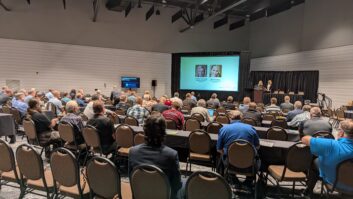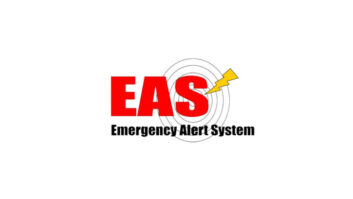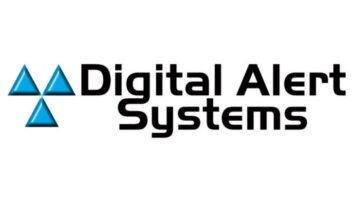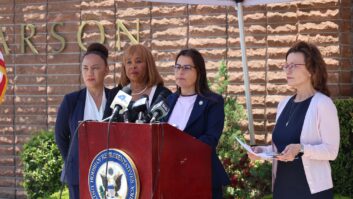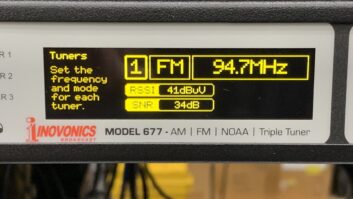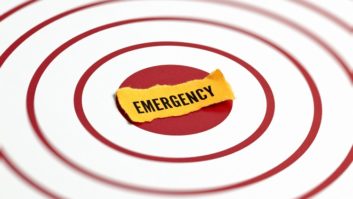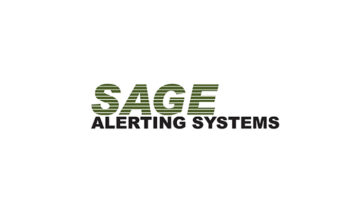The radio industry continues to advocate for the importance of AM and FM bands for emergency alerting in the U.S.
The Federal Communications Commission has received comments about its proposed rulemaking to modernize emergency alerting, including EAS and Wireless Emergency Alerts.
iHeartMedia and National Public Radio are among the organizations asking the FCC to keep radio as the centerpiece to a reimagined alert system.
Radio the heart of the matter
iHeartMedia, the largest radio group in the U.S., said it takes its role as an EAS participant seriously. It urged extreme caution with any changes, asking the FCC not to delegate alert distribution “to less robust infrastructures.”
“Because broadcast radio does not rely on individual subscriptions or internet connectivity, broadcast radio can reach more people quickly, even when other communications networks are congested or disrupted,” iHeart wrote.
The company said 16 of its stations are designated Primary Entry Point stations and 166 of its stations qualify as EAS Local Primary stations.
iHeart highlighted how its WWNC(AM) in Asheville, N.C., stayed on the air after Hurricane Helene struck in September of 2024 while staff were trapped at the radio station with no power, no water and little cell phone service.
The company, which also delivers content via streaming, subscription, podcasting and other digital platforms, said the “daisy chain” architecture of EAS ensures nationwide, synchronized reception of presidential messages.
iHeart said that radio stations are “uniquely qualified” to serve the country with accurate information during and after emergencies.
NPR preaches caution
National Public Radio meanwhile urged the FCC to move forward cautiously with emergency messaging over broadband, including social media, websites or blogs.
“While new broadband technologies may eventually offer customized alerts and enhanced video, the commission must be mindful of broadband’s limited usefulness during and after significant emergencies such as hurricanes, tornadoes, fires and floods, when power often is lost or broadband and cellular outages are extensive,” NPR told the FCC.
NPR, which operates the Public Radio Satellite System, said it has no objection to the commission expanding the functionality of the EAS or adding new EAS participants, such as video streamers. However, NPR cautioned that the commission should not adopt new mandates.
“This is particularly important for smaller broadcasters, such as public radio broadcasters,” it said.
NPR concluded by emphasizing that radio has always been the most “robust and resilient” way of pushing out alerts to the public. Any reimagined system, NPR said, must preserve radio’s role.
Alerting but at what cost?
Meanwhile one community radio advocate asks why LPFMs should be required to have an Emergency Alert System decoder.
REC Networks said in its comments that the rules should take into consideration the resources available to these small stations.
It also is calling on the FCC to create separate categories of radio stations – large and small broadcasters, as well as LPFM – and issue appropriate EAS requirements for each.
“No more one size fits all,” Michi Bradley, REC’s founder, wrote on the group’s Substack.
REC is focused on the cost for small broadcasters to participate in EAS, as mandated by the federal government. It recommends the FCC incorporate a “cost per potential listener” model.
Furthermore, Bradley argued, some stations shouldn’t be required to implement emergency alerting at all.
[Related: “NAB Outlines Key Steps to Modernizing EAS”]
“Small stations, especially LPFM stations, should also have the flexibility of not providing EAS alerts or being able to use tools, such as software-based open-source methods, in order to deliver a basic form of emergency alerting without the captive audience need for certification,” she wrote.
This is important, REC wrote, “especially given all of the alternatives available.”
REC hammered home the cost of EAS for small stations, arguing that they must pay the same amount for alerting equipment as bigger stations that cover a larger area. And the decision by Sage to stop manufacturing EAS equipment, REC said, has created a monopoly in the industry, with only one company providing new hardware.
Bradley also opposes complex cybersecurity requirements for small stations, and calls on the FCC to stop development on the “template-based” multilingual technology proposed under Chairwoman Jessica Rosenworcel.
REC said it would be a “significant burden” on stations and software developers to equip decoders with languages “not even spoken in this country.” It pointed to efforts, such as in Southern California for Spanish-language EAS, that are sufficient.
REC asked that Chairman Brendan Carr’s administration roll back enforcement of the requirements that radio broadcast stations use an EAS decoder that is capable of Common Alert Protocol Polling. CAP Polling is a technology in a station’s EAS hardware that will poll for a CAP message after it receives a legacy EAS alert. The coder/decoder will wait for up to 10 seconds for that same message to become available by internet delivery over IPAWS.
If a duplicate IPAWS message is received in time, a radio station’s unit will forward it. REC argued that the CAP polling is more helpful for television because it allows for a more significant amount of content to be crawled on the screen, and especially helping those with disabilities.
REC says it is possible some LPFMs are not operating in compliance due to the costs that came with the CAP Polling requirement.
As the FCC considers upgrades to EAS, watch for our further coverage of other filings in the coming days. You can review EAS shareholder comments at the FCC website. Reply comments are due by Oct. 10, although the government shutdown may affect deadlines.
(Read more of our coverage on the future of emergency alerts.)
